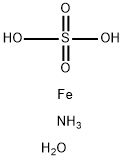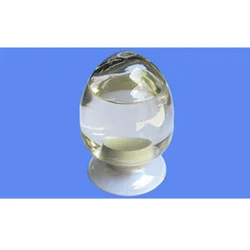1-Dodecanethiol
Synonym(s):1-Dodecanethiol;NDM;Dodecyl mercaptan;Lauryl mercaptan;Lauryl mercaptan, Dodecyl mercaptan
- CAS NO.:112-55-0
- Empirical Formula: C12H26S
- Molecular Weight: 202.4
- MDL number: MFCD00004885
- EINECS: 203-984-1
- SAFETY DATA SHEET (SDS)
- Update Date: 2025-09-25 17:15:13

What is 1-Dodecanethiol?
Chemical properties
1-Dodecanethiol is a colourless liquid organic compound, with a characteristic odour. Soluble in methanol, ether, acetone, benzene, ethyl acetate, insoluble in water.
The Uses of 1-Dodecanethiol
1-Dodecanethiol is used in the preparation of hydrophobic or mixed self-assembled monolayers. It is also employed as a chain transfer agent for radical polymerization. Further, it is utilized as a polymerization inhibitor in polyurethane and neoprene adhesives, which finds application in the footwear industry. In addition to this, it acts as a protein regenerating agent used for the regeneration of native proteins from mercuribenzoate.
The Uses of 1-Dodecanethiol
Dodecyl mercaptan is a poymerization inhibitor added to polyurethane resins and Neoprene glues for use, e.g., in the shoe industry.
The Uses of 1-Dodecanethiol
1-Dodecanethiol can be used for the synthesis of thiol-stabilized metal nanoparticles (NPs), such as gold nanoparticles and silver nanoparticles, which have been produced for use as catalysts, electronic devices, fillers, sensors and active components in composite materials, and other applications.
This molecule is used for the production of hydrophobic SAMs. It can also be used in mixed SAMs to give a hydrophobic background and act as a spacer to move other functional groups or domains farther apart.
What are the applications of Application
1-Dodecanethiol is used in protein regeneration and self-assembled monolayers (SAMs)
Preparation
Preparation of 1-dodecanethiol: 1-Bromododecane, thiourea and 95% ethanol are heated to reflux reaction, then sodium hydroxide solution is added and heated. After the reaction is finished, cooled and left to stratify, the oil layer is the crude thiol. The crude product is washed with water, dried, distilled, and distilled under reduced pressure, which is 1-dodecanethiol.
What are the applications of Application
1-Dodecanethiol (DDT) can be used as a source of sulfur for the synthesis CdS quantum dots (QDs) and lead sulfide nanoparticles (PbS) which find potential applications in energy efficient lighting, solar cells and as ammonium gas sensing agents. DDT may be used to form a self-assembled monolayer (SAM) on copper surface as a corrosion resistant coating. Functionalization with DDT may form SAMs on geranium (Ge) to improve the surface characteristics for futuristic applications in microelectronics. This molecule is used for the production of hydrophobic SAMs. It can also be used in mixed SAMs to give a hydrophobic background and act as a spacer to move other functional groups or domains farther apart.
General Description
Oily colorless liquid with a mild skunk odor. Freezing point 19°F.
Air & Water Reactions
Air and moisture sensitive. Insoluble in water. Reacts vigorously with water or steam.
Reactivity Profile
1-Dodecanethiol is incompatible with bases, oxidizing agents, reducing agents and alkali metals. Easily oxidized to disulfide.
Health Hazard
1-Dodecanethiol is irritating to skin, eyes, and mucous membranes. Ingestion may cause nausea. Repeated skin exposure can cause dermatitis and may produce a sensitizing effect. It is very toxic to aquatic life with long lasting effects.
Fire Hazard
Special Hazards of Combustion Products: Poisonous and irritating gases (e.g., sulfur dioxide) are generated in fires.
Purification Methods
Dry it with CaO for several days, then distil it from CaO. [Beilstein 1 IV 1851.]
Properties of 1-Dodecanethiol
| Melting point: | -7 °C |
| Boiling point: | 266-283 °C(lit.) |
| Density | 0.845 g/mL at 25 °C(lit.) |
| vapor density | 7 (vs air) |
| vapor pressure | 0.002 hPa (20 °C) |
| FEMA | 4581 | DODECANETHIOL |
| refractive index | n |
| Flash point: | >230 °F |
| storage temp. | Store below +30°C. |
| solubility | Chloroform (Sparingly), Methanol (Slightly) |
| pka | 10.49±0.10(Predicted) |
| form | Liquid |
| color | Clear |
| Odor | Stench |
| Water Solubility | IMMISCIBLE |
| Sensitive | Air Sensitive |
| λmax | 205nm(lit.) |
| JECFA Number | 1924 |
| BRN | 969337 |
| Exposure limits | ACGIH: TWA 0.1 ppm NIOSH: Ceiling 0.5 ppm(4.1 mg/m3) |
| Stability: | Air Sensitive |
| CAS DataBase Reference | 112-55-0(CAS DataBase Reference) |
| NIST Chemistry Reference | 1-Dodecanethiol(112-55-0) |
| EPA Substance Registry System | Dodecyl mercaptan (112-55-0) |
Safety information for 1-Dodecanethiol
| Signal word | Danger |
| Pictogram(s) |
 Corrosion Corrosives GHS05  Exclamation Mark Irritant GHS07  Environment GHS09 |
| GHS Hazard Statements |
H314:Skin corrosion/irritation H317:Sensitisation, Skin H410:Hazardous to the aquatic environment, long-term hazard |
| Precautionary Statement Codes |
P261:Avoid breathing dust/fume/gas/mist/vapours/spray. P272:Contaminated work clothing should not be allowed out of the workplace. P273:Avoid release to the environment. P280:Wear protective gloves/protective clothing/eye protection/face protection. P303+P361+P353:IF ON SKIN (or hair): Remove/Take off Immediately all contaminated clothing. Rinse SKIN with water/shower. P305+P351+P338:IF IN EYES: Rinse cautiously with water for several minutes. Remove contact lenses, if present and easy to do. Continuerinsing. |
Computed Descriptors for 1-Dodecanethiol
| InChIKey | WNAHIZMDSQCWRP-UHFFFAOYSA-N |
1-Dodecanethiol manufacturer
New Products
4,4-Difluoropiperidine hydrochloride tert-butyl 9-methoxy-3-azaspiro[5.5]undecane-3-carboxylate Indole Methyl Resin N-Isopropylurea N,N-Dicyclohexylcarbodiimide(DCC) MELDRUMS ACID 5-METHYLISOXAZOLE-4-CARBOXYLIC ACID Magnessium Bis glycinate Zinc ascorbate 1-bromo-2-butyne 2-acetamidophenol 9(10H)-anthracenone Erythrosin B, 4-Piperidinopiperidine 2-((4-morpholinophenylamino) (methylthio) methylene) malononitrile 2,4-dihydroxybenzaldehyde 3-(4-morpholinophenylamino)-5-amino-1H-pyrazole-4-carbonitrile Methyl 2-methylquinoline-6-carboxylate 2,6-dichloro-4-nitropyridine 4-Bromo-2-chlorobenzonitrile 2-(benzylamino)acetic acid hydrochloride 4-(tert-Butoxycarbonylamino)but- 2-ynoic acid 3,4-dihydro-2H-benzo[b][1,4]dioxepine 1-Phenyl-1-cycloprppanecarboxylicacidRelated products of tetrahydrofuran








You may like
-
 1-Dodecanethiol 112-55-0 99%View Details
1-Dodecanethiol 112-55-0 99%View Details
112-55-0 -
 1-Dodecanethiol CAS 112-55-0View Details
1-Dodecanethiol CAS 112-55-0View Details
112-55-0 -
 1-Dodecanethiol CAS 112-55-0View Details
1-Dodecanethiol CAS 112-55-0View Details
112-55-0 -
 1-Dodecanethiol CAS 112-55-0View Details
1-Dodecanethiol CAS 112-55-0View Details
112-55-0 -
 1-DODECANETHIOL Extra Pure CAS 112-55-0View Details
1-DODECANETHIOL Extra Pure CAS 112-55-0View Details
112-55-0 -
 1-Dodecanethiol CAS 112-55-0View Details
1-Dodecanethiol CAS 112-55-0View Details
112-55-0 -
 1-Dodecanethiol CAS 112-55-0View Details
1-Dodecanethiol CAS 112-55-0View Details
112-55-0 -
 1 - Dodecanethiol, For Laboratory, Reagent GradeView Details
1 - Dodecanethiol, For Laboratory, Reagent GradeView Details
112-55-0
